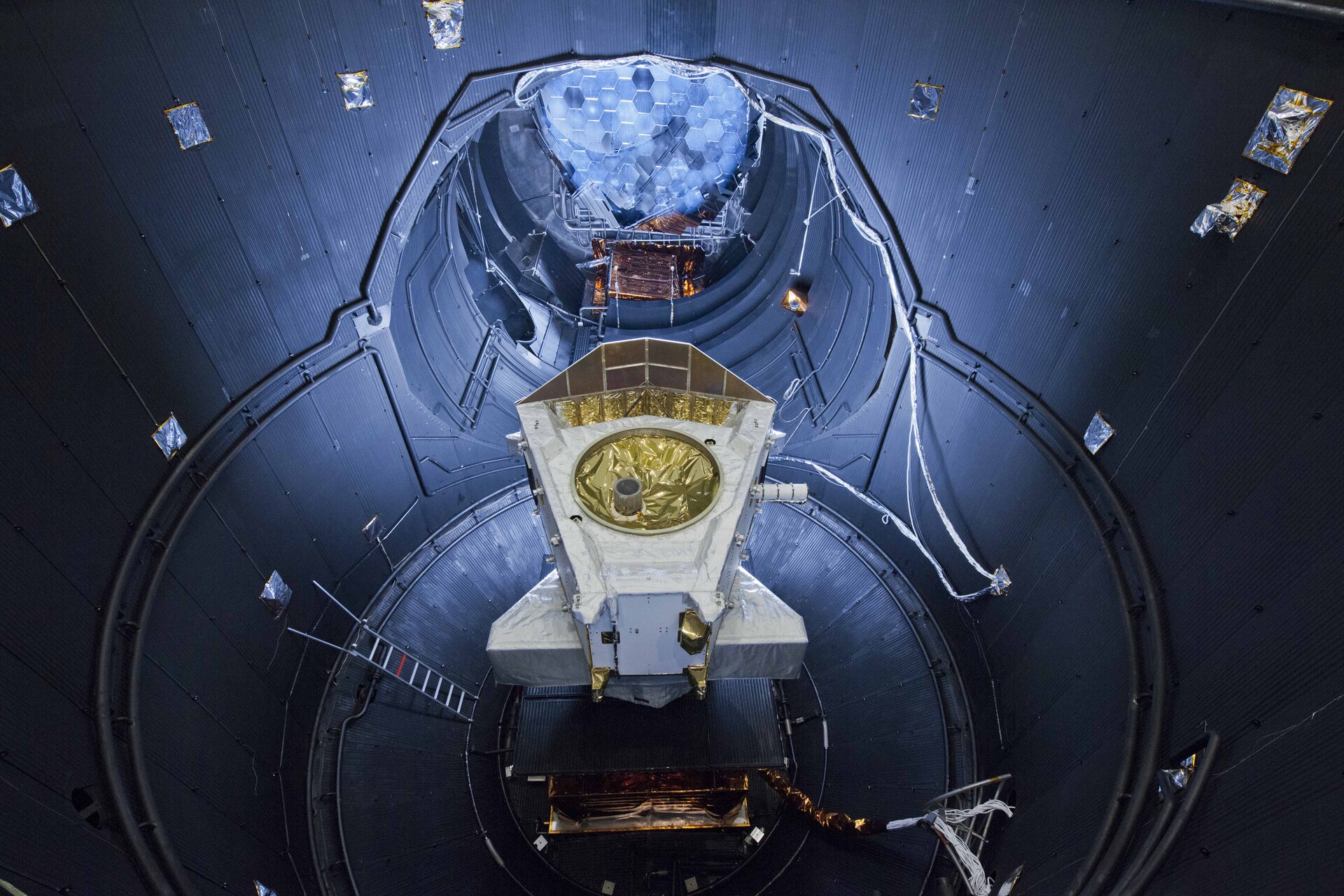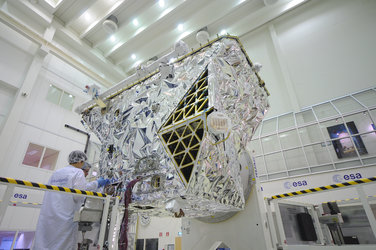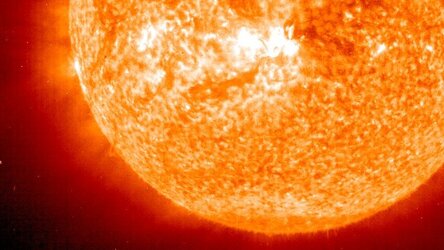The mercury rises for BepiColombo
The engineering model of the BepiColombo Mercury Transfer Module has completed a 12-day Sun-simulation test inside the Large Space Simulator at ESA’s test centre in the Netherlands, where it received a taste of the extreme solar heating it will experience when it enters orbit around the Solar System’s innermost planet in 2022.
The image was taken during a dry run on 20 February, during which the facility’s motion system replicated the different orientations of the simulated solar beam and the positions of the test table.
The real test, in vacuum, began on 26 February and continued non-stop for 12 days. During this time the module was subjected to ten times the solar heating experienced by satellites circling Earth.
Some of the 121 hexagonal mirror segments that direct the simulated solar radiation onto the spacecraft are visible towards the top of the image. The aperture through which the ‘sunlight’ travels from the nineteen 25 kW lamps can be seen just to the left of the mirror segments.
The Mercury Transfer Module will carry the mission’s two scientific satellites – Japan’s Mercury Magnetospheric Orbiter and Europe’s Mercury Planetary Orbiter – into orbit around Mercury. The spacecraft will use electric propulsion to reach its destination.
In this view, one of four ion propulsion engines has already been installed (the grey cylinder close to the centre of the unit), while part of the solar array drive protrudes from the right side of the module.
Earlier this month, the mission’s Mercury Planetary Orbiter Mechanical and Propulsion Bus Proto-Flight Model completed a ‘bake out’ in the Phenix thermal vacuum facility at ESA’s ESTEC test facility. This heated the unit to 60°C in a vacuum for 23 days to remove any contaminants that would outgas in space.
BepiColombo is an international mission between ESA and the Japan’s JAXA space agency. It is scheduled for launch in 2015 and will arrive at Mercury in 2022, where it will study the planet’s composition, geophysics, atmosphere, magnetosphere and geological history.















 Germany
Germany
 Austria
Austria
 Belgium
Belgium
 Denmark
Denmark
 Spain
Spain
 Estonia
Estonia
 Finland
Finland
 France
France
 Greece
Greece
 Hungary
Hungary
 Ireland
Ireland
 Italy
Italy
 Luxembourg
Luxembourg
 Norway
Norway
 The Netherlands
The Netherlands
 Poland
Poland
 Portugal
Portugal
 Czechia
Czechia
 Romania
Romania
 United Kingdom
United Kingdom
 Slovenia
Slovenia
 Sweden
Sweden
 Switzerland
Switzerland




































